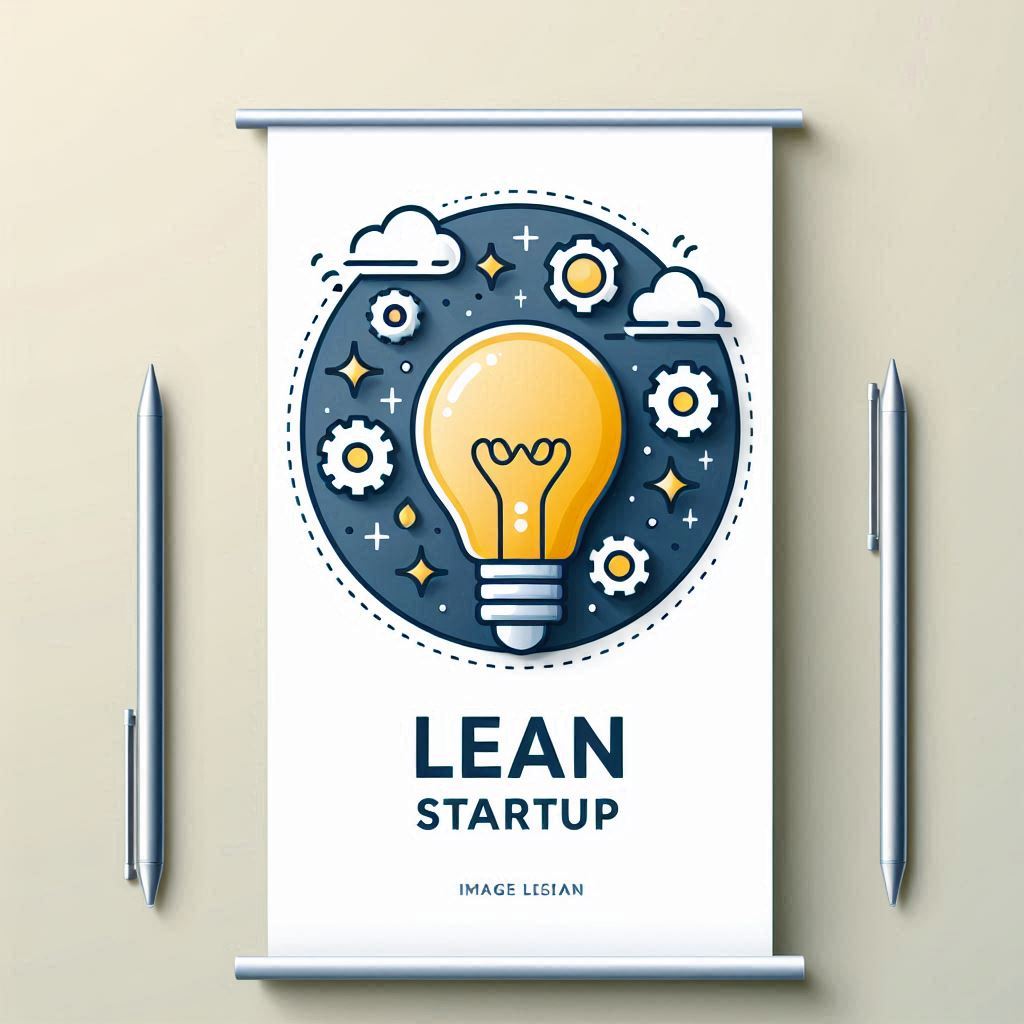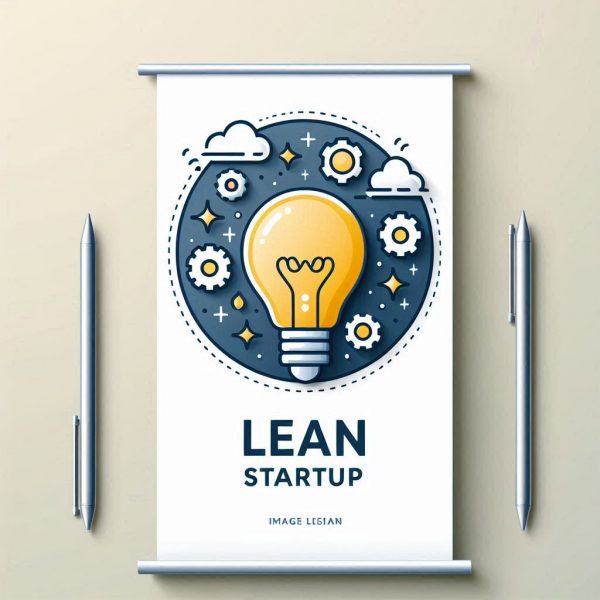In today’s fast-paced and ever-changing business landscape, the ability to innovate quickly and effectively has become a critical factor for success. Traditional business models and strategies often involve lengthy planning cycles, extensive market research, and significant upfront investment, which can lead to slow and costly development processes. In contrast, Lean Startup methodologies offer a more agile and iterative approach to innovation, enabling businesses to test ideas, gather feedback, and adapt quickly to changing market conditions. In this article, we explore the principles of Lean Startup and discuss strategies for implementing its methodologies to achieve rapid iteration and innovation.
Read more about Business
Understanding Lean Startup Methodologies
The Lean Startup methodology, popularized by entrepreneur and author Eric Ries, is based on the principles of lean manufacturing and agile development. At its core, Lean Startup emphasizes the importance of validating assumptions, testing hypotheses, and iterating rapidly to develop products or services that meet customer needs and achieve market fit. The key pillars of Lean Startup include:
- Build-Measure-Learn: The Build-Measure-Learn feedback loop forms the foundation of Lean Startup. Instead of spending months or years developing a product or service in isolation, Lean Startup encourages businesses to build a Minimum Viable Product (MVP) quickly, measure its performance through feedback and metrics, and learn from the results to inform future iterations.
- Validated Learning: Lean Startup emphasizes the importance of validated learning – gathering data and evidence to validate or invalidate assumptions about the market, customers, and product. By conducting small-scale experiments and gathering feedback from real users, businesses can quickly iterate and improve their offerings based on actual data and insights.
- Pivot or Persevere: Based on the feedback and insights gathered through the Build-Measure-Learn loop, Lean Startup encourages businesses to make informed decisions about whether to pivot – change direction based on new information – or persevere – continue pursuing the current strategy. Pivots can take many forms, including changes to the product, target market, pricing strategy, or business model.
Implementing Lean Startup Methodologies
Implementing Lean Startup methodologies requires a shift in mindset and culture within the organization, as well as the adoption of new processes and practices. Here are some strategies for implementing Lean Startup methodologies effectively:
- Start with a Problem Statement: Identify a specific problem or pain point that your target audience is experiencing and develop a hypothesis about how your product or service can address it. Focus on solving a real problem for real customers, rather than building a solution in search of a problem.
- Build a Minimum Viable Product (MVP): Develop a Minimum Viable Product (MVP) – the simplest version of your product or service that allows you to test your assumptions and gather feedback from users. The goal of the MVP is to validate or invalidate key hypotheses and learn as quickly and cheaply as possible.
- Measure Key Metrics: Define key metrics and indicators that will help you measure the success of your MVP and track progress towards your goals. These metrics may include customer acquisition cost, customer lifetime value, conversion rate, retention rate, and user engagement.
- Gather Feedback and Iterate: Launch your MVP to a small group of early adopters or beta testers and gather feedback through surveys, interviews, user testing, and analytics. Use this feedback to identify areas for improvement and iterate quickly on your product or service.
- Experiment and Test Hypotheses: Conduct small-scale experiments to test specific hypotheses about your product, target market, pricing strategy, or marketing channels. Be open to unexpected findings and be willing to pivot based on the results of your experiments.
- Embrace Failure as Learning: Recognize that failure is an inherent part of the innovation process and view it as an opportunity for learning and growth. Celebrate successes and learn from failures, iterating and improving based on the insights gained from each experiment or iteration.
- Foster a Culture of Innovation: Create an environment where experimentation, creativity, and risk-taking are encouraged and supported. Empower employees to take ownership of their ideas and initiatives and provide them with the resources and support they need to innovate and iterate quickly.
Sign up for the Connect Nigeria daily newsletter
Benefits of Lean Startup Methodologies
Implementing Lean Startup methodologies offers numerous benefits for businesses seeking to innovate and grow in today’s fast-paced marketplace:
- Faster Time-to-Market: Lean Startup enables businesses to bring products and services to market more quickly by focusing on building and iterating rapidly. This allows businesses to respond quickly to changing market conditions and emerging opportunities.
- Reduced Risk and Cost: By testing assumptions and gathering feedback early and often, Lean Startup helps businesses mitigate risk and reduce the cost of failure. By validating ideas before investing significant time and resources, businesses can avoid costly mistakes and focus on initiatives with the highest potential for success.
- Increased Customer Satisfaction: Lean Startup prioritizes customer feedback and validation, resulting in products and services that better meet the needs and preferences of customers. By continuously iterating and improving based on customer insights, businesses can create more valuable and satisfying experiences for their customers.
- Greater Innovation and Creativity: Lean Startup fosters a culture of innovation and experimentation, empowering employees to generate new ideas, test hypotheses, and explore new opportunities. By encouraging creativity and risk-taking, businesses can uncover new insights and solutions that drive innovation and growth.
Case Studies: Examples of Lean Startup Success
- Dropbox: Dropbox, a cloud-based file storage service, started as a simple MVP – a video demonstrating the product concept – which allowed the founders to gauge interest and gather feedback before building the actual product. This lean approach helped Dropbox validate demand and attract early adopters, leading to rapid growth and success.
- Airbnb: Airbnb, a platform for short-term vacation rentals, began as a side project by its founders who rented out air mattresses in their apartment to make ends meet. By testing their idea with a simple MVP – a website and a few listings – Airbnb was able to validate demand and refine its offering based on user feedback, ultimately becoming a global hospitality giant.
- Zappos: Zappos, an online shoe and clothing retailer, started with a lean approach, using a drop-shipping model to test demand for its products before investing in inventory. By focusing on customer service and satisfaction, Zappos built a loyal customer base and grew into a billion-dollar business.
Register to attend the CN Business Mixer
Conclusion
In today’s fast-paced and highly competitive business environment, the ability to innovate quickly and effectively is essential for success. Lean Startup methodologies offer a proven framework for achieving rapid iteration and innovation, enabling businesses to test ideas, gather feedback, and adapt quickly to changing market conditions. By embracing the principles of Lean Startup – including building MVPs, measuring key metrics, gathering feedback, and iterating based on validated learning – businesses can accelerate their growth, mitigate risk, and create more valuable and satisfying experiences for their customers. As businesses continue to evolve and adapt to changing consumer preferences and market dynamics, Lean Startup methodologies will remain a powerful tool for driving innovation and achieving sustainable growth.
Got a suggestion? Contact us: [email protected]


